The Handmaid’s Tale parallels our world in an eerily familiar way!
“The Handmaid’s Tale” series is based on Margaret Atwood’s dystopian book of the same name. Almost every aspect of it is steeped in political and religious history.
Atwood has spoken at great length about how she pulled from actual global events to create the world of Gilead and its monstrosities. In fact, the terrifying events of this novel and series all have their precedents in some of the darkest chapters in world history.
Its real-life origins may also have something to do with why the book remains relevant all these years after its publication.
Today, we’ve decided to look at all the historical events The Handmaid’s Tale is based on in hopes of learning from past mistakes to ensure the plot of the show and novel doesn’t become a reality.
From the rise of religious denominations to giving birth as the world watches, here are 6 ways The Handmaid’s Tale parallels our world!
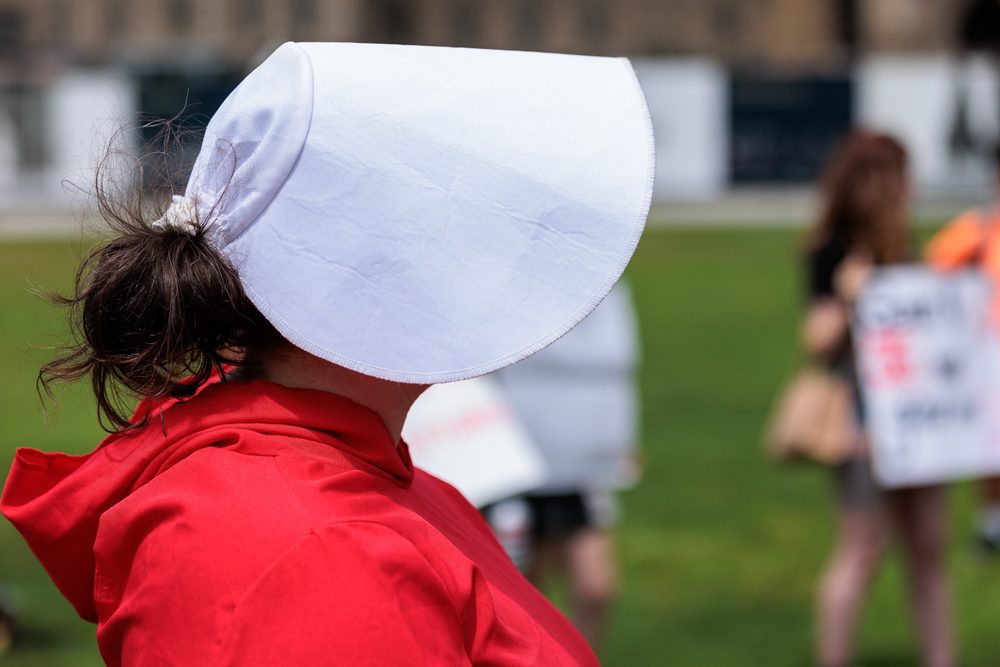
Using handmaids to battle infertility is inspired by a biblical story.
In both the show and book, Handmaids are forced to give birth, fathered by high-ranking men after they’re subjected to ritualized rape by those same men. The wives and husbands then raise those children while the Handmaids are assigned to another household.
The Handmaids are trained for their new roles at Gilead’s Rachel and Leah Center. This center directly references the Old Testament story of Rachel and her sister Leah, who married Jacob. While Leah didn’t have any issues conceiving children, Rachel couldn’t get pregnant.
Discouraged, Rachel offered up her handmaid to Jacob as a “vessel” so that she could have her own children. Bilhah gave birth to two boys, both of whom Rachel named.
The Handmaid’s Tale parallels this not only for the part of the handmaids as “breeders” but for the entire founding of Gilead. And if you remember from the story: The group that overthrew the US government and established Gilead in Atwood’s novel is named Sons of Jacob.
The Salem witch trials partially inspire the persecution of women in Gilead.
Margaret Atwood has made it obvious that The Handmaid’s Tale takes much of its inspiration from the Salem witch trials and the slaying of innocent women in the 1600s.
In 2017, Atwood gave an interview where she said that The Handmaid’s Tale parallels diligently the tale of Mary Webster. Before the Salem witch trials, this woman was the most infamous “witch” in Massachusetts.
After Philip Smith, a prominent member of Hadley, Massachusetts, fell sick, locals assumed a witch HAD to be involved.
They determined that Mary Webster must be the witch responsible and proceeded to assault and hang her as a punishment.
But Mary Webster prevailed!
Her story was documented in 1689’s Memorable Providences. Margaret Atwood has stated that The Handmaid’s Tale is dedicated to Mary Webster because “she’s an example of a female wrongly accused. But she’s a symbol of hope because they didn’t manage to kill her. She made it through.”
The rise of the Christian right in “The Handmaid’s Tale” draws from US history.
The Gilead government was partly inspired by politics under President Reagan in the 80s.
To illustrate the authoritarian world run by the highly religious right in “The Handmaid’s Tale,” Atwood drew upon history, mainly 17th-century Puritan theocracy in our country and its political climate in the early 1980s.
“America was not initially founded as an 18th-century enlightenment republic. It was initially a 17th-century theocracy. That tendency keeps bubbling up in America occasionally,” Atwood said in a 2017 interview.
She also indicates that the election of Ronald Reagan as president and the country’s embrace of Christian conservatism influence her book. In 1981, Reagan proposed a constitutional amendment to restore organized prayer in schools.
Throughout his candidacy and presidency, the former president also aligned himself with religious, political organizations, like the Focus on the Family and Moral Majority. These groups’ brief rise in power caused a feared crackdown on women’s access to abortion.
It’s worth noting that this distinct aspect of The Handmaid’s Tale parallels modern-day society amid the overturning of Roe v. Wade and other abortion-related rulings.
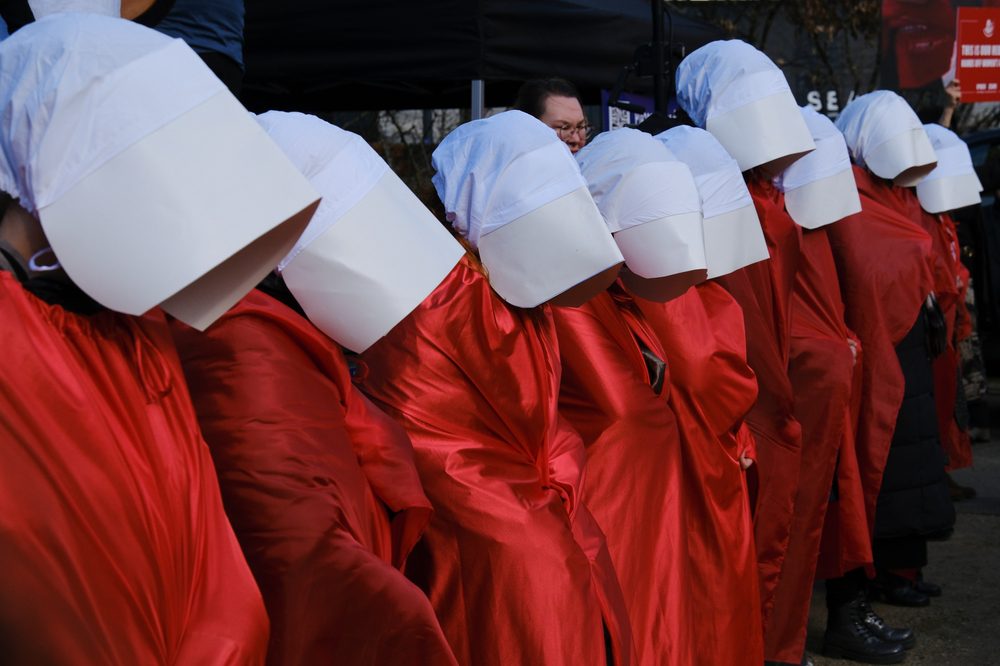
Decree 770
The Handmaid’s Tale parallels a time in Romanian history when “Decree 770” was passed, stating that all contraception and abortion would be illegal. During the 50s, Romanian women started entering the workforce and having fewer children.
By the time the 60s rolled around, contraceptives were extremely limited, so abortion became Romania’s primary family planning method. But the Communist Party wanted to see an extreme increase in the population. So they outlawed abortion and birth control.
Under the Romanian Communist regime and Decree 770, women were forced to visit the doctor’s office once a month to check for pregnancy. Police officers were even positioned to stand guard in the hallway, ensuring all women complied.
In those days, wealthy women could buy birth control on the black market. But the lower class didn’t have that same luxury.
In cases where women caught pregnancies before their doctor did, they usually tried to give themselves at-home abortions, resulting in many deaths. This policy remained intact until the fall of Nicolae Ceausescu in 1989.
The incarceration of “promiscuous” women can be traced back to a 20th-century program in the US.
In “The Handmaid’s Tale,” women seen as sinners or promiscuous, including lesbians and abortion patients, are sent to labor camps, constantly dying from toxic conditions.
But what you may not have known is that The Handmaid’s Tale parallels the concept of incarcerating women deemed as immoral dating back to a little-known part of our history. Time reports that this practice was common in the early 1900s when the “American Plan” was enforced.
The program was launched around WWI to protect American soldiers from STDs and prostitution. Under this, thousands of women suspected of carrying STDs or general promiscuity were imprisoned, locked up in jails, and forced to work hard labor.
This was all under the justification of ensuring national security. Historian Scott Stern has called this plan “one of the largest and longest-lasting mass quarantines in US history.”

The forced separation of mothers and children continues in modern society.
Gilead controls the distribution of children in “The Handmaid’s Tale,” forcing Handmaids to hand over the care and control of their newborns to the families they work for instantly after birth.
To explain this plot point, Atwood pointed to The Handmaid’s Tale parallels, including the horrendous practices of Adolf Hitler in the Second World War.
“Totalitarianism always has views on who will be allowed to have babies and what shall be done with them,” Atwood told the LA Times. “For example, the generals in Argentina were dumping people out of airplanes.
But if it were a pregnant woman, they would wait until she gave birth and give it to somebody in their command system. After which, they dumped the woman out of the airplane. Hitler stole his children, blond ones, hoping that he could turn them into blond Germans.”
Forced adoptions, generally involving babies born of unwed or indigenous mothers, also commonly occurred from the 50s to the 70s in the US, Australia, Canada, and a few other countries.
On this subject, Margaret Atwood’s The Handmaid’s Tale parallels again and proves its uncanny ability to remain eerily applicable. The issue of forcible separation among families has again come to the forefront under Trump’s presidency.
Following the implementation of his administration’s zero-tolerance immigration policy, many have drawn parallels between current times and the brutally restrictive climate of Gilead.
If you haven’t read The Handmaid’s Tale yet, we highly suggest you do it ASAP! You can get the Paperback on Amazon today!
Share your thought with us: Could this level of control over women happen in real life?… We hope not!
If you found this article about The Handmaid’s Tale parallels interesting, we also recommend checking out: Leonardo da Vinci’s Secret Life: 7 Astonishing Discoveries REVEALED




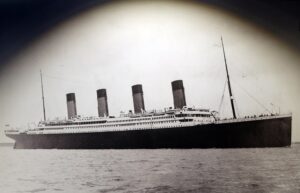


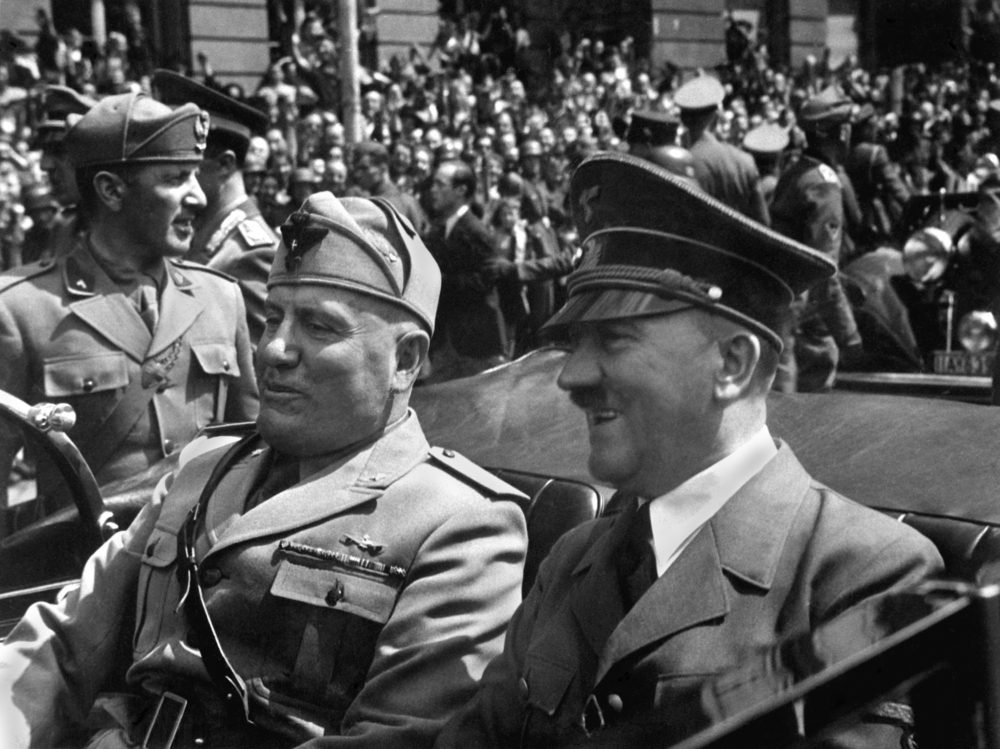
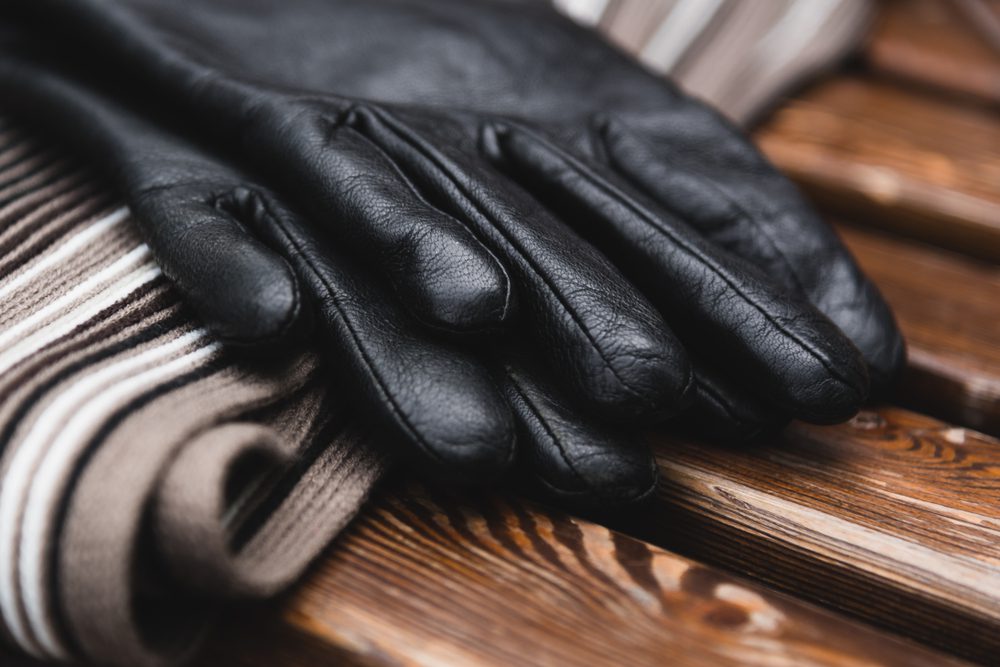
One Response
I particularly remember an episode of the series where June puts all the past news clippings into cohesive order to show a trail of events leading up to the current climate in the show. Then Roe vs Wade is overturned. And those who refuse to learn the lessons of history…